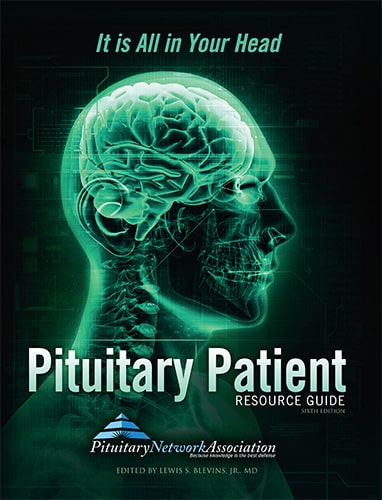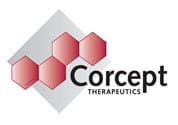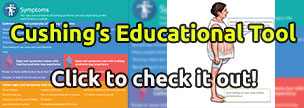Pituitary Glossary starting with O
Olfactory Bulb
Anterior projection of the olfactory lobe that is the place of termination of the olfactory nerves.
One of two structures connected to the olfactory tracts to which the olfactory cells are anchored.
Olfactory Cells
Specialized cells found at the top of the nasal cavity which converts a smell detected by the olfactory hairs into tiny electrical signals.
The sense of smell is part of our chemical sensing system, or the chemosenses. Sensory cells in our nose, mouth, and throat have a role in helping us interpret smells, as well as taste flavors. Microscopic molecules released by the substances around us (foods, flowers, etc.) stimulate these sensory cells. Once the cells detect the molecules they send messages to our brains, where we identify the smell. Olfactory, or smell nerve cells, are stimulated by the odors around us–the fragrance of a gardenia or the smell of bread baking. These nerve cells are found in a small patch of tissue high inside the nose, and they connect directly to the brain. Our sense of smell is also influenced by something called the common chemical sense. This sense involves nerve endings in our eyes, nose, mouth, and throat, especially those on moist surfaces. Beyond smell and taste, these nerve endings help us sense the feelings stimulated by different substances, such as the eye-watering potency of an onion or the refreshing cool of peppermint.
Olfactory Nerves
Nerves which connect to the nostrils to provide one’s sense of smell.
The nerve that carries impulses for the sense of smell from the nose to the brain. The olfactory nerve is the first cranial nerve.
Olfactory Tract
The tract of nerve fibers in the olfactory lobe that passes from the olfactory bulb to the olfactory trigone.
One of two structures containing neurons which carry the “smell” from the olfactory cells, where it has been converted into an electrical signal, to the area of the brain where the smell can be identified.
Oncologist
A specialist in oncology
A specialist in the study or science dealing with the physical, chemical, and biologic properties and features of neoplasms (abnormal tissue growth or cancer), including causation, pathogenesis, and treatment.
Oncology
The study of cancer.
The study or science dealing with the physical, chemical, and biologic properties and features of neoplasms (abnormal tissue growth or cancer), including causation, pathogenesis, and treatment.
Opaque
Impervious to light; not translucent or only slightly so
Impervious to light; not translucent or only slightly so
Optic Chiasm
Area where optic nerves cross over, located just above the pituitary gland, which can be compressed by pituitary tumors and hinder eyesight.
At the optic chiasm, nerve fibers from half of each retina cross over to the opposite side of the brain. The fibers from the other half of the retina travel to the same side of the brain. Because of this junction, each half of the brain receives visual signals from the visual fields of both eyes.
Optic Nerves
Nerves which connect to the eyes providing one’s sense of sight.
The optic nerve connects the eye to the brain. The optic nerve carries the impulses formed by the retina. The retina is the nerve layer that lines the back of the eye that senses light and creates impulses. These impulses are dispatched through the optic nerve to the brain, which interprets them as images. Using an ophthalmoscope, the head of the optic nerve can be easily seen. It can be viewed as the only visible part of the brain (or extension of it).
The optic nerve is the second cranial nerve. The cranial nerve emerge from or enter the skull (the cranium), as opposed to the spinal nerves which emerge from the vertebral column. There are twelve cranial nerves.
In terms of its embryonic development, the optic nerve is a part of the central nervous system (CNS) rather than a peripheral nerve.
The word “optic” comes from the Greek “optikos”, pertaining to sight.
Orbit
The bony cavity containing the eyeball
Orbit CT Scan is a procedure that uses x-rays to examine the orbits (eye sockets) and the globes (eyes).
Orthopedics
The medical specialty concerned with the preservation, restoration, and development of form and function of the musculo skeletal system, extremities, spine, and associated structures by medical, surgical, and physical methods.
A surgical specialty that utilizes medical, surgical, and physical methods to treat and correct deformities, diseases, and injuries to the skeletal system, its articulations, and associated structures (MeSH).
Osteoporosis
A condition of reduced bone mass, with decreased outer thickness and a decrease in the number and size of the spongy structures in the bone (but normal chemical composition), resulting in increased fracture incidence.
Osteoporosis is classified as primary (Type 1, postmenopausal osteoporosis; Type 2, age-associated osteoporosis; and idiopathic, which can affect juveniles, premenopausal women, and middle-aged men) and secondary osteoporosis (which results from an iden tifiable cause of bone mass loss).









